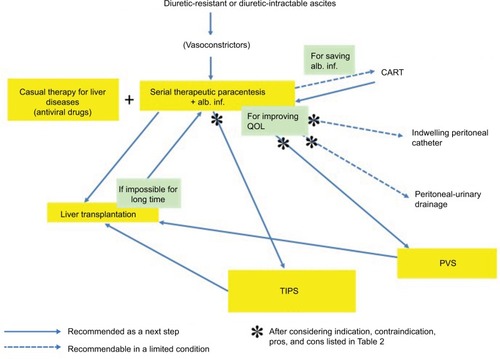Figures & data
Table 1 Definition of refractory ascites in international guidelines (A) and criteria of refractory ascites used by authors from China and Japan (B)
Table 2 Comparisons of various treatments for refractory ascites: review of available information
Table 3 The evidence-based grading about the usefulness of various therapeutic approaches to refractory ascites applying the Grading of Recommendations Assessment, Development, and Evaluation (GRADE) system
Figure 1 Therapeutic algorithm for refractory ascites.
Abbreviations: alb. inf., albumin infusion; CART, cell-free and concentrated ascites reinfusion therapy; PVS, peritoneovenous shunt; QOL, quality of life; TIPS, transjugular intrahepatic portosystemic shunt.

